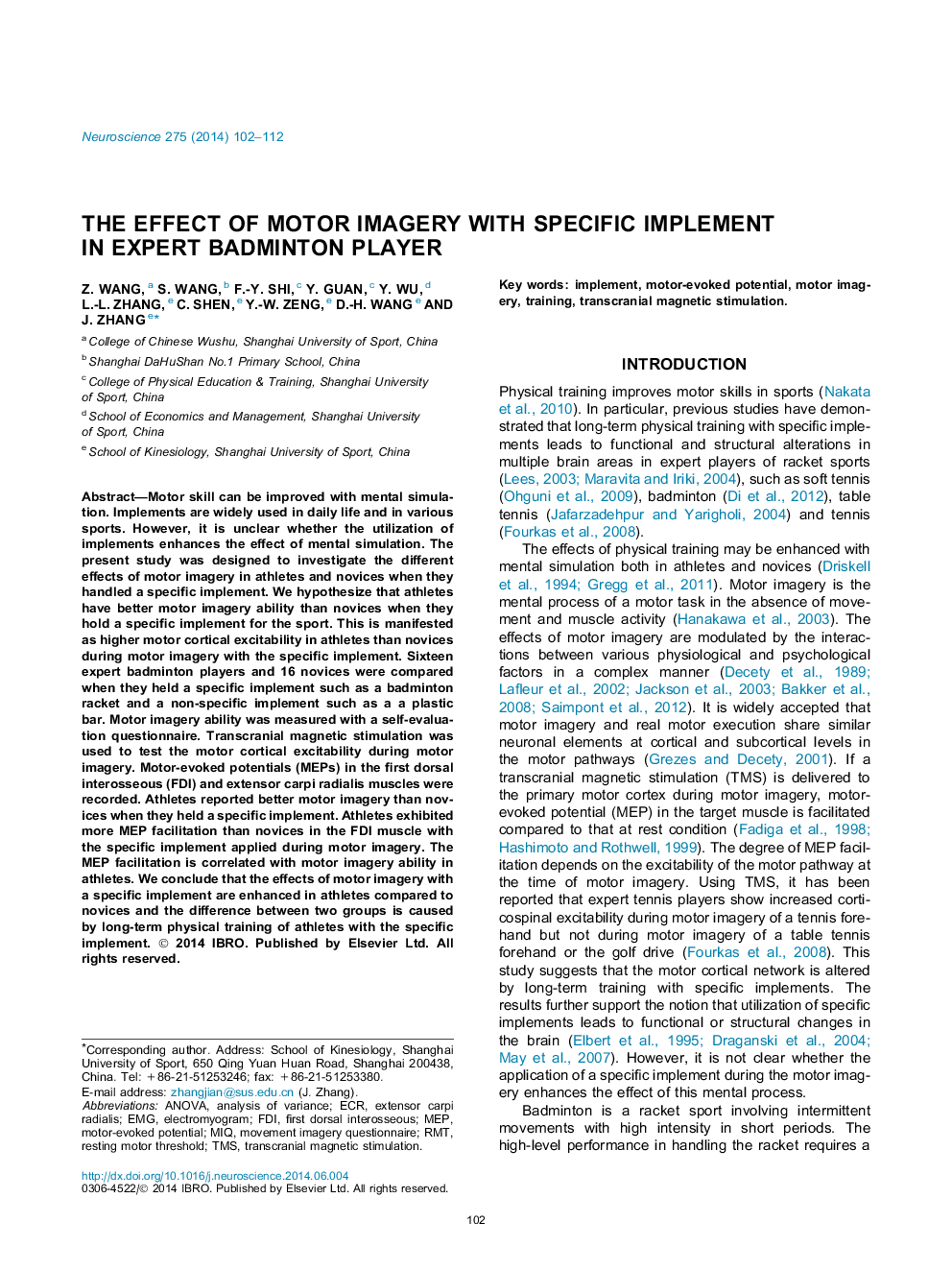| Article ID | Journal | Published Year | Pages | File Type |
|---|---|---|---|---|
| 6273452 | Neuroscience | 2014 | 11 Pages |
â¢Athletes have better motor imagery ability with implements than novices.â¢Athletes show higher motor cortical excitability during imagery with implements.â¢Cortical excitability during motor imagery correlates with motor imagery ability.â¢Effects of motor imagery in athletes are enhanced with the application of implements.â¢Long-term training with implements leads to functional reorganization in athletes.
Motor skill can be improved with mental simulation. Implements are widely used in daily life and in various sports. However, it is unclear whether the utilization of implements enhances the effect of mental simulation. The present study was designed to investigate the different effects of motor imagery in athletes and novices when they handled a specific implement. We hypothesize that athletes have better motor imagery ability than novices when they hold a specific implement for the sport. This is manifested as higher motor cortical excitability in athletes than novices during motor imagery with the specific implement. Sixteen expert badminton players and 16 novices were compared when they held a specific implement such as a badminton racket and a non-specific implement such as a a plastic bar. Motor imagery ability was measured with a self-evaluation questionnaire. Transcranial magnetic stimulation was used to test the motor cortical excitability during motor imagery. Motor-evoked potentials (MEPs) in the first dorsal interosseous (FDI) and extensor carpi radialis muscles were recorded. Athletes reported better motor imagery than novices when they held a specific implement. Athletes exhibited more MEP facilitation than novices in the FDI muscle with the specific implement applied during motor imagery. The MEP facilitation is correlated with motor imagery ability in athletes. We conclude that the effects of motor imagery with a specific implement are enhanced in athletes compared to novices and the difference between two groups is caused by long-term physical training of athletes with the specific implement.
